Protecting Your Calgary Trees from Storms, Diseases, and Pests
Reading time: 6 minutesIn Calgary, your trees stand strong and silent, able to withstand storms, diseases, pests, and the odd hockey puck, too. But every now and then, your trees need help to stay resilient and thrive in the face of urban challenges.
Let’s take a look at how you can shield your trees from the elements to ensure your green friends continue to shade, sway, and beautify the Stampede City.
Protecting Your Trees from Storms in Calgary
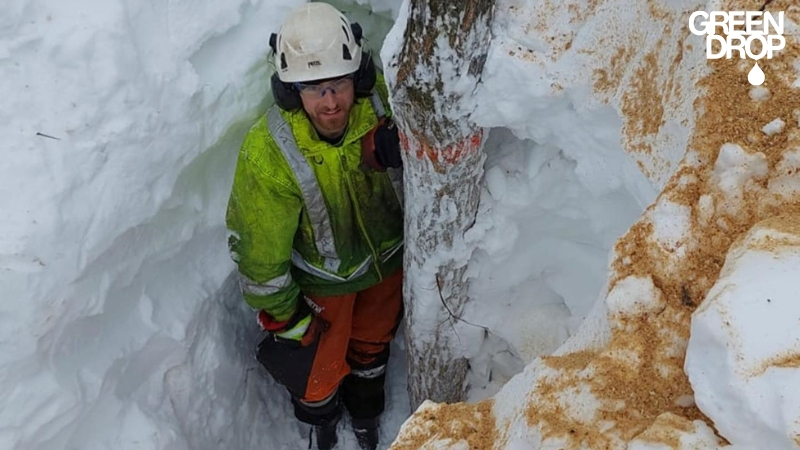
What Kind of Damage to Expect
Storms pose a threat to your trees. Common storm damage you’ve probably seen includes broken branches, uprooted trees, or even bark stripped away by fierce winds.
These injuries affect the aesthetic appeal of your yard and weaken the structure and stability of your trees. A tree with broken branches is more susceptible to diseases and pests, as open wounds can serve as gateways for infection.
Moreover, a storm-damaged tree might have a compromised root system. This affects its ability to absorb water and nutrients, making it less stable in the event of future storms.
Pre-Storm Preparations
Protecting your trees from storm damage begins long before the storm clouds roll in. Here are some tips to help your trees stand strong:
- Regular pruning is essential for removing potentially weak branches that could break off during a storm, posing risks to safety and the tree's health. Focus on thinning the canopy to allow wind to pass through more easily. This also reduces the chance of the tree being uprooted.
- Secure young, newly planted trees using stakes. Young trees often lack the root strength to withstand strong winds. By supporting these saplings, you can prevent them from leaning or uprooting during a storm. Ensure the support is flexible enough to allow some movement, as this encourages stronger root growth.
- Applying mulch around the base of your trees can help retain soil moisture and temperature, contributing to healthier root development. A strong root system is key to a tree's stability during storms.
- Conduct regular tree health inspections for signs of disease, pest infestation, or structural weakness. Identifying and addressing these issues promptly can prevent storm damage from exacerbating existing problems.
- Consult with certified arborists when you’re not sure about the risk of storm damage. Arborists can assess the hazard and recommend specific actions to mitigate these risks. They might recommend strategies like strategic pruning or even tree removal for those beyond help.
Guarding Against Disease
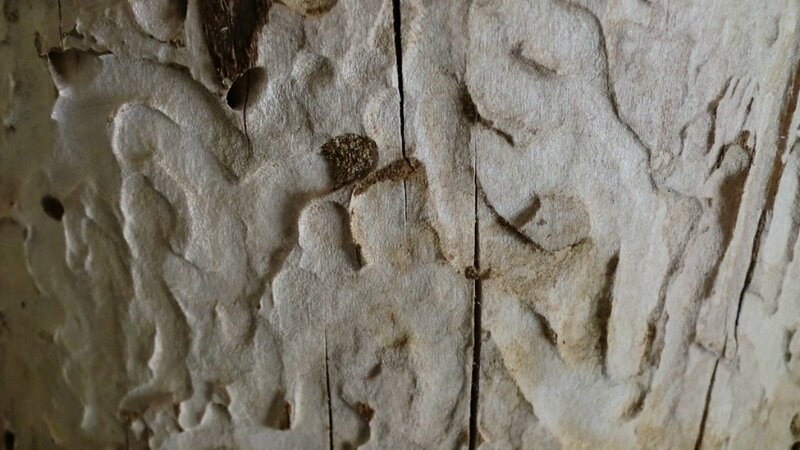
Common Tree Diseases in Calgary
Several tree diseases lie in wait to weaken your trees in Calgary. Knowledge is your best bet for spotting disease and acting on time.
- Dutch Elm Disease targets, as the name suggests, elm trees. It is spread by beetles or root grafts between trees. Look for wilting leaves turning yellow and then brown during the summer. This disease can lead to the tree's death if not managed promptly.
- Black Knot Fungus manifests as dark, swollen knots on branches of plum and cherry trees. These growths can girdle branches, restricting water and nutrient flow and eventually killing the limb.
- Fire Blight gives trees and shrubs a scorched appearance, with leaves and branches suddenly turning brown or black. It's particularly aggressive in apples and pears.
- Lastly, Bronze Leaf Disease affects poplars and aspens. It turns their leaves a bronze colour before premature fall drops, leading to weakening and death over several seasons.
Managing Disease
Some steps you can take to prevent, treat, and remove disease from your trees:
The first thing you can do is select resistant varieties when planting new trees. Certain cultivars have been bred to be resilient against specific diseases, providing inherent protection.
- Proper watering is crucial as well. Too much or too little can stress trees, making them more susceptible to disease. Make sure your trees receive deep, infrequent watering to encourage strong root systems.
- Proper fertilization, like watering, if tailored to your tree's specific needs, can boost its overall health and disease resistance.
- Should a disease rear its ugly head, early detection, and prompt action are key. Regular inspections and diagnostics can reveal early signs of disease, allowing for quicker intervention.
- For many diseases, pruning out infected areas well below the affected parts can help prevent spread.
- Professional injections of fungicides might be necessary for systemic diseases. This is best done by certified arborists.
- In cases where a tree is severely affected or poses a risk of spreading disease to others, tree removal might be the most responsible action.
- Lastly, maintaining a clean and healthy environment around your trees can discourage disease. Clear away fallen leaves and debris where pathogens might overwinter and spread in the spring.
- Mulching can also help, provided it's kept away from the trunk to prevent moisture buildup and rot.
The Pests Among Us
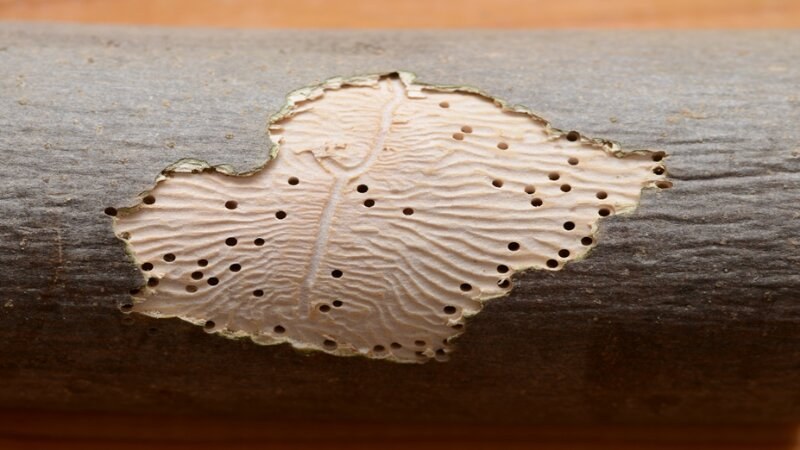
Types of Tree Pests
Tree pests in Calgary come in various forms, each with unique feeding habits that can significantly impact tree health.
- Chewing insects like the Ash Leaf Cone Roller eat leaf tissue. They roll leaves into tight cones where they reside and feed, leading to defoliation. Satin Moth, Yellow-headed Spruce Sawfly, and Mites are other chewing insects found in Calgary.
- Sucking insects, such as Aphids, Elm Scale, Oystershell Scale, and Pine Needle Scale, pierce tree tissues to feed on sap. This weakens trees, leaving them vulnerable to disease.
- Meanwhile, boring insects like the Ash Bark Beetle and Bronze Birch Borer tunnel into tree bark, disrupting the flow of nutrients and water. The tree weakens over time.
Dealing with Pests
Integrated Pest Management (IPM) is a holistic approach to pest control, prioritizing environmental safety and sustainability.
The cornerstone of IPM is prevention, which is maintaining tree health through proper care to make them less attractive to pests.
Non-chemical methods are the first line of defence. This can include encouraging natural predators, such as birds or beneficial insects that feed on pests. Manual removal of pests or infested limbs can also be effective, especially if caught early.
Control treatments are a last resort with IPM. They should be used responsibly to minimize the impact on non-target organisms and the environment. The idea is to use selective pesticides that target specific pests.
Navigating Tree Protection Laws
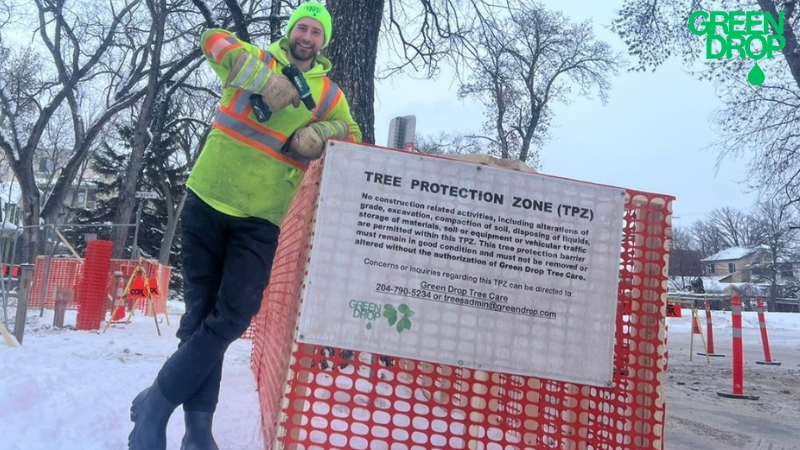
Distinguishing between public and private trees is crucial before undertaking any tree care efforts. Public trees are those located on city property, like parks, boulevards, and public sidewalks. They are protected under the Tree Protection Bylaw. This means actions such as pruning, attaching items, or even planting new trees in these areas require the City’s approval.
You have more freedom for the trees within your property line. That being said, the bylaw can still impact your actions. Your storm, disease, and pest protection endeavours should respect the overarching goal of preserving Calgary's green canopy.
In essence, you want to consider how treatments might affect nearby public trees carefully. Also, make sure that any work done near property lines doesn't infringe on or affect City trees.
Branching Into Safety with Green Drop
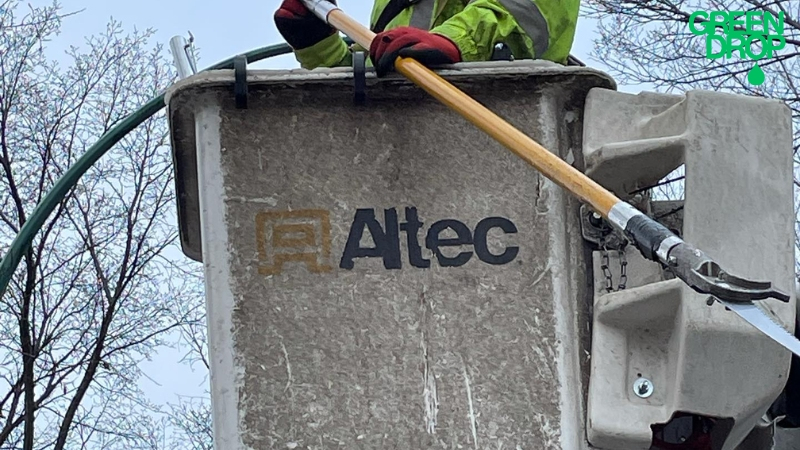
Calgary can really test your trees’ mettle. Suffice it to say that being prepared isn't just wise; it’s essential. When storms brew or pests loom, at Green Drop, we’ve got your back with our emergency tree care services.
However, we believe proactive care is the best form of care. Don't wait for the storm or infestation to show.
Book a free tree care assessment with our ISA-certified arborists today and ensure your trees not only survive but thrive. Together, we can root for a greener, more resilient future for your garden.

